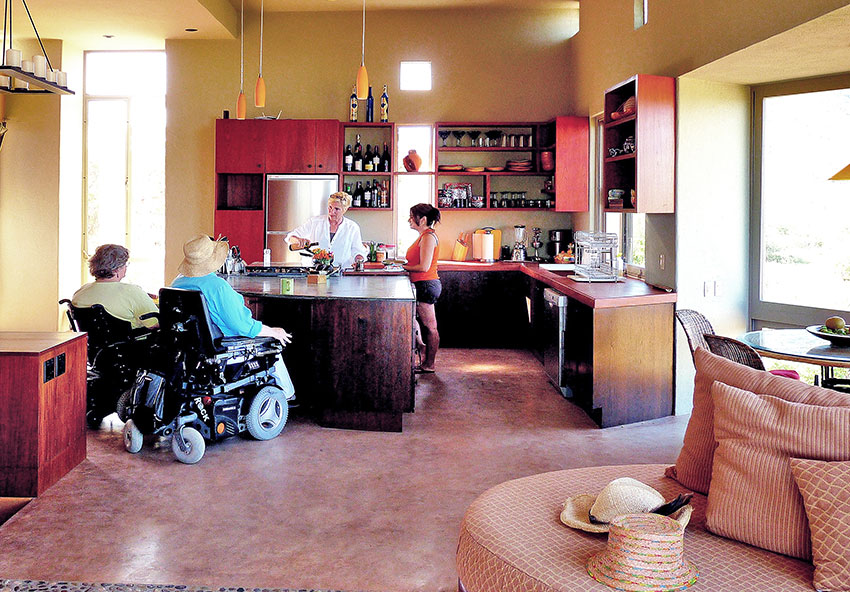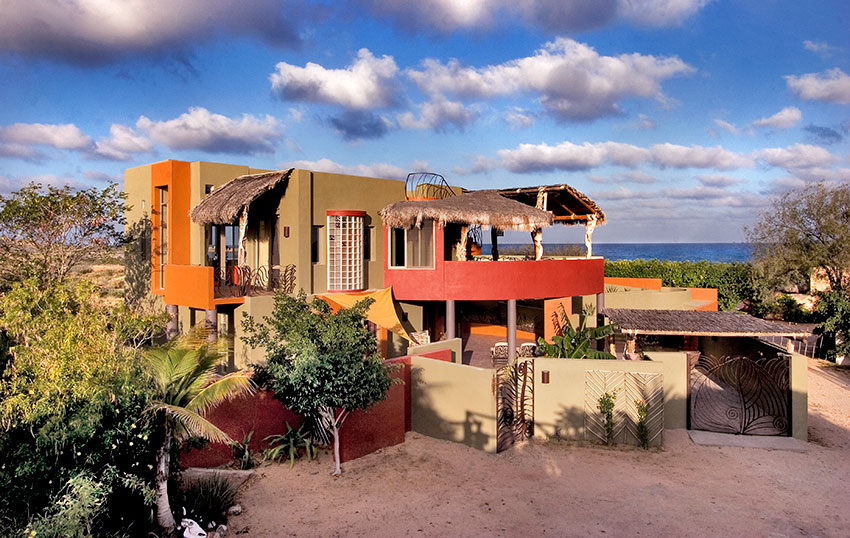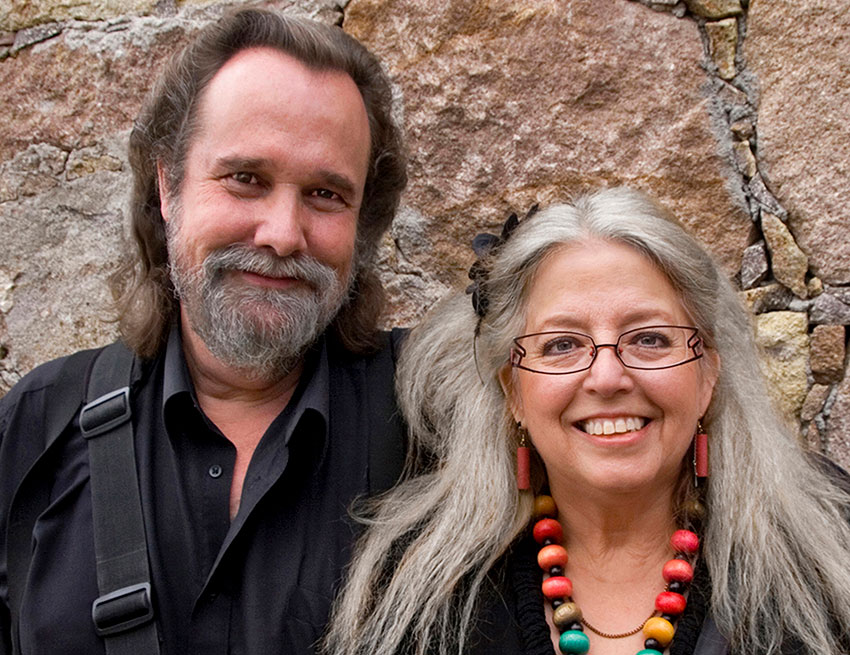A house in Baja California Sur that incorporates accessibility without sacrificing aesthetics is an award winner in a competition for universal design.
As part of an initiative called “Accessibility is Beautiful,” the U.S.-based Cerebral Palsy Foundation, in collaboration with the American Institute of Architects New York chapter, put out a call in 2018 for universally designed homes.
From a series of entries, a steering committee looked for homes that would highlight how accessibility can be both functional and fashionable, and then created a Lookbook and mini-YouTube series to promote the selected designs to the public.
One of those entries was Casa Cabo Pulmo by Cathi and Steven House of San Francisco-based House + House architects, a home that incorporates universal design and accessibility in the far reaches of the Baja Peninsula — where land meets sea, and soulful meets utilitarian.
The Casa Cabo Pulmo story stretches back several years to San Francisco where fellow Californians Patricia Wright and Debra Zeyen had often admired the home of a friend designed by House + House. When they came across another House + House-designed home in Mexico, it felt like destiny.

The two asked the husband and wife team to build their dream home near Baja California’s most southern tip, but with a caveat — they wanted it 100% accessible.
Cathi and Steven House opened their architectural firm in San Francisco in 1982 and added an office in San Miguel de Allende 25 years ago. They have since designed more than 250 homes in four countries.
The two spend several months of the year traveling in Mexico and beyond investigating, in their own words, “what people build when there are no architects around.” Prioritizing indigenous architecture and local building materials gives House + House structures a sense of place that is integrated into their very fiber.
“Underneath all of our work is a very organic beginning,” says Cathi House. “We work very hard to make sure that everything we do comes from a complete understanding of the sun, the moon, stars, the breezes, the views, the shadows, and everything about a particular spot on Earth that could contribute in a positive or negative way to whatever you might design there.”
Casa Cabo Pulmo, with its bold desert hues, expansive cactus garden and sections of palapa roof, invokes that connection to the land. But the house is also deeply connected to the very real needs of its occupants.
Patricia Wright is a disability-rights activist who was instrumental in the passage of the Americans With Disabilities Act. Wright herself is visually impaired and both she and Zeyen could foresee a day when they might have mobility or other serious disabilities.

So they wanted a 100% accessible house so they could, in Wright’s words, “age in place.”
House + House has been incorporating accessibility into its designs for decades. Casa Cabo Pulmo was a challenge the firm welcomed.
“Dividing people into those who are mobile and those who are not — or people who have abilities and others who have disabilities — that kind of division is part of what I think is wrong with our culture as a whole,” says Cathi House, “We’re not holistic enough to think about humanity and all of the needs of the people that might come in to this house or any house”
Plus, she adds, universal design isn’t just for the permanently disabled.
“Something can always happen in your life. You break a leg, you start to develop vision or hearing problems. It can even be as simple as . . . taking a shower and you’re all soapy and you hear a crash and a scream in the other room. You try to get through the door, but you have a round doorknob and can’t get a grip. So are you really disabled at that point? Well, yes, because of poor design.”
The Cabo Pulmo house has some logical elements one might expect in a universally-designed home — a 50-meter ramp leading to the second floor that sweeps up one side of the property, providing incredible ocean views as well an extension of the house’s gardens, kitchen spaces and hallways wide enough for a wheelchair, and lifts for getting in and out of the shower and bed.

But there are also smaller, intimate details that, unless you have lived with a disability, you might not have considered – sinks are lower with space underneath for a wheelchair, light switches are lower, outlets are higher, doors have zero thresholds and toilets have 180-degree access.
And, in Casa Cabo Pulmo, each of these elements is incorporated so as not to detract from the natural flow of the living spaces.
The design doesn’t only consider the future of the owners, but also owners of the future. The house is completely off the grid with 12 solar panels and battery back-up as well as a rainwater catchment system, convection skylights, and a layout that moderates the extreme temperature highs and lows of the Mexican desert.
“Buildings will be around for a few hundred years,” says Cathi House. “You want to make sure what you create is worthy, not just for the clients of the moment, but for anyone who might ever come to be in these buildings.”
As U.S. baby-boomers arrive at an age when accessibility is vital for continued independence, the demand for universal design is slowly growing, and yet it often remains an afterthought in the design of public and private spaces.
Do the architects believe universal design is part of the architectural lexicon these days? The couple hosts groups of architecture students from around the world each year at their school in San Miguel de Allende — The Center for Architecture Sustainability + Art (CASA) — where universal design is part of the curriculum

“I don’t think it’s being taught in universities the way it should be; I don’t think it’s even a conversation that they’re having at any significant level,” says Cathi House.
“But we certainly talk to our students about it,” says Steven House. “The younger they are when they start thinking about it, the more hope we have for the future, that it will just become natural and integrated into everyone’s thought process.”
In the meantime, programs like the Accessibility is Beautiful initiative are shining a spotlight on integrated design that proves accessibility doesn’t have to mean giving up on aesthetics.
Casa Cabo Pulmo is a standing example of how a beautiful space in a stunning environment can be welcoming to any guest, regardless of ability.
The writer is a Mexico City freelancer and regular contributor to Mexico News Daily.
